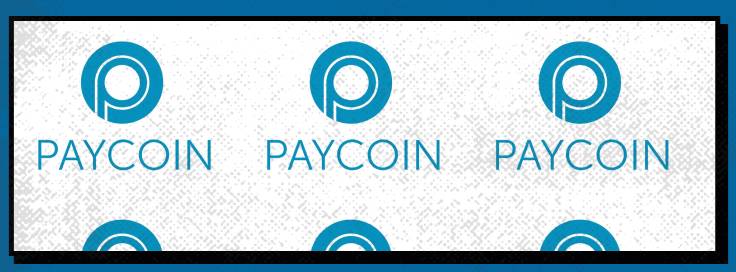Why Crypto Projects Collapse
When it comes to cryptocurrencies, Bitcoin and Ethereum are the first ones that cross our minds. Then there are the most popular media projects, surrounded by a growing hype. But hundreds of others, no less interesting, remain well-known only to investors and traders who are constantly searching for new assets for profitable investments. The younger the project, the more profitable it is to invest in. However, the facts show that more than 25,000 cryptocurrencies have “died” since 2011. According to Coinopsy, a platform that specializes in startups, nine out of 10 crypto projects usually shut down. Among the main reasons for the failures are:
- Commonplace scams
- Poorly developed business plan
- Mismanagement of investments
- Low level of professionalism of developers
- Security and scaling problems
- Lack of global strategy and poor marketing
The most notable failures of blockchain projects are worth examining in detail.
OneCoin and Finiko
The OneCoin project, launched in 2014, was one of the first crypto pyramids in the former Soviet Union. Its founder, Ruja Ignatova, known as the “cryptoqueen,” held large-scale events worldwide, including ones at Wembley Arena in the United Kingdom. The words “OneCoin is the Bitcoin Killer” were heard everywhere. Finally, it turned out that OneCoin had nothing to do with cryptocurrencies and blockchain technology.

Later, millions of investors were deceived by a classic Ponzi scheme – money from new depositors went to pay out profits to already existing scheme participants. Community representatives and regulators had been publishing warnings about the fraudulent nature of the project since 2015, but depositors continued to “invest.” In October 2017, Ruja Ignatova got on a plane from Sofia to Athens and disappeared. Interpol soon put her on an international wanted list, which still yielded no results. The company continued to collect money until 2019. The total damage is estimated at between €4 and €15 billion.
In 2019, the startup Finiko appeared, which has much in common with OneCoin: a fair offer for investors, network marketing elements, popularity, success and collapse after being recognized as a pyramid scheme. In 2021, the founders and major functionaries of the project were arrested. The total economic damage is estimated at almost $100 million. OneCoin and Finiko are the most high-profile examples of classic scams in the “blockchain project” packaging.
BitConnect

The BitConnect project was started in 2016 and offered investors about 1% income per day from their BTC investments. At its core, the process was all about using an internal platform and a “revenue bot” that allowed profit to be fixed in the project’s own token, namely BCC. A profitable offer and aggressive marketing brought BitConnect into the top 20 cryptocurrency projects by capitalization in July 2017.
In early January 2018, the Texas State Securities Board declared BitConnect a Ponzi scheme, after which the value of tokens collapsed. The project shut down two weeks later. It turned out it had never legally existed. American investors alone lost more than $2 billion. The legal proceedings are still underway.
GetGems

The GetGems project was launched in December 2014 as a mobile messenger and claimed to be a “crypto Facebook.” People could meet, communicate in the app and even use it as a full-fledged cryptocurrency wallet. The project attracted more than $1 million in investment in 2015. A cryptocurrency token called GEMZ was issued, becoming the main economic incentive for project participants and forming the foundation of the referral program.
Market speculators depreciated the project. According to CoinMarketCap, the price of GEMZ peaked at $0,0563 in mid-May 2017, followed by the token’s delisting on Poloniex. The situation was entirely provoked by individual traders, which was possible due to the project’s small capitalization. The project was abandoned after that.
SpaceBIT

The cryptocurrency SpaceBIT gained popularity at the end of 2014. The developers planned to launch “nanosatellites” into orbit to provide the opportunity to have cold wallets and access to banking services even without access to the Internet. An advertising campaign and numerous presentations of the blockchain project attracted much attention. Then, in early 2015, the project stopped showing any signs of life, not even demonstrating prototypes of the promised products. The reasons for such a twist remain unknown, but the team working on the project shifted its attention to the BlockVerify project, an anti-counterfeit blockchain solution.
PayCoin

PayCoin hit the market in 2014. GAW Miners and ZenMiners, known at the time, and their founder Joshua Garza stood behind it. There was an active campaign with the XPY token being released. Moreover, the cryptocurrency service PayBase was announced and even rolled out then. But the main “product” that Joshua’s services sold were cloud mining contracts. In 2015, it was revealed that there was no claimed computing power behind these contracts, and the creation of PayCoin was just an attempt to bridge the cash gap of the core business. In 2019, Joshua Garza went to prison to serve his sentence, remaining owed investors more than $9,2 million, which he will have to pay back by court order.
The DAO
The success and eventual collapse of The DAO is the loudest blockchain fiasco in history. A quick chronology of events:
- The project emerged in 2016, offering a range of attractive solutions based on Ethereum blockchain smart contracts.
- In the spring of 2016, it had its most successful ICO ever, raising more than $160 million in total.
- In June, the project suffered a hacker attack. Taking advantage of a vulnerability in the project’s code, the attacker stole about $65 million.
- By the end of 2016, The DAO was completely shut down, with its tokens withdrawn from circulation.

The DAO’s rise and fall story deserves special attention, so we dedicated a separate article to it. Despite the project’s collapse, it gave rise to the ICO boom.
Needless to say, the above projects listed above had high hopes yet were abandoned, collapsed or turned out to be a scam. The main conclusion to be drawn is that investing in cryptocurrency projects is still very risky, and you should study all aspects of a particular project with great care before deciding to invest your money.










